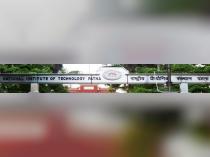Can I get NIT - Patna to pursue B.Tech, if I get 160 marks in JEE Mains?
I belong to general category.
-

Answered by
Group Captain Vinayak Deodhar La vie est faite pour vivre pas pour stresser | Scholar-Level 18
8 years agoHello Rishav,
The maximum marks would be 360 as per the last paper. Thus, 160 is just below 50 percent. It matters a lot as to how many other students have scored more than you. -

Answered by
NITIN DESHMUKH Yard by yard its hard, but inch by inch its | Scholar-Level 17
8 years agoIt will be difficult to get NIT-Patna at this score. Generally, 190-200+ is a good score to get into NITs. A score around 220-230 is a safe score to get into any NIT.
Similar Questions for you
Bundelkhand University considers AKTU Entrance Test or Bundelkhand University Entrance Test scores for admission to BTech. Aspirants do not require passing JEE Main for admission to BTech programme of the university. Candidates must also meet the eligibility requirements for admission. Aspirants who have passed Class 12 with Physics, Chemistry, Mathematics/ Biology with at least 50% aggregate can apply for BTech.
JEE Main is a national-level engineering entrance exam. It is held for candidates who pass the class 12 exam for admission to the best colleges of the nation, like the NITs, IIITs, and GFTIs. Various top private engineering colleges also accept the JEE Main exam score for admission.
JEE Main is also a qualifying exam for JEE Advanced, which is mandatory for admission to the IITs.
JEE Main exam is held in India as well as abroad in computer-based test mode. The National Testing Agency (NTA) conducts the exam twice a year.
The questions in the exam come from the class 11 and 12 level syllabus. prescribed by NTA. The subjects asked in the ex
JEE Main 2026 session 1 exam will be held between January 21 to 30. Less than 1 month is left for the exams. Candidates can also appear for the JEE Main 2026 session 2 exams to be held between April 2 to 9.
KIET Ghaziabad accepts JEE Main score for admission to BTech programme. However, it is not compulsory. Aspirants can also get admission in BTech based on their CUET scores. Aspirants must also complete Class 12 with PCM stream for admission in BTech.
CSJMU JEE Main Cutoff in 2021 for the General category candidates under the Home State quota, ranged from 98162 to 818777 for admission to various BTech programmes in the last round closing ranks. The course which was the toughest of admission was BTech in Computer Science and Engineering (Artificial Intelligence), with the last round cutoff being 98162. The course which was the easiest for admission was BTech in Chemical Engineering.
Taking an Exam? Selecting a College?
Get authentic answers from experts, students and alumni that you won't find anywhere else
Sign Up on ShikshaOn Shiksha, get access to
- 66k Colleges
- 1.2k Exams
- 680k Reviews
- 1800k Answers




